Birdhouses – Something to tweet about

Bird trail. Birdhouses are as varied as birds themselves. All images by Diane Morey Sitton.
There’s a lot to be said about birdhouses.
For starters, they attract bluebirds, chickadees, nuthatches, and tufted titmice among the more than four dozen North American bird species that normally nest in tree holes. Not only that, birdhouses are centers of activity as birds go about building nests, laying eggs, and feeding their young. And, whether plain or fancy, colorful or camouflage-inspired, birdhouses ooze charm.
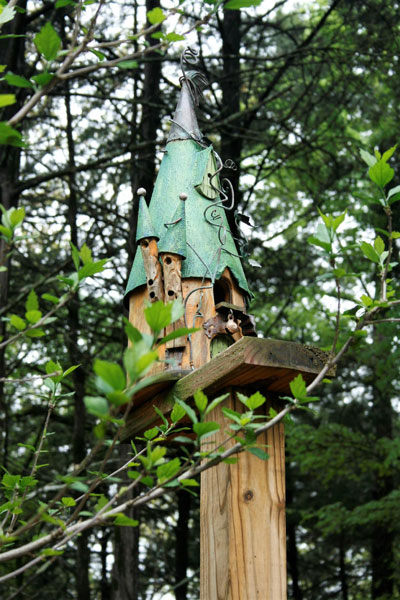
Fit for a king. Ornate birdhouses add charm to gardens, but make sure the compartment size, entrance hole size, and entrance hole placement appeal to specific bird species.
Before building or buying a birdhouse, decide what kind of birds you want to attract. Specific nest box dimensions, entrance hole size, and entrance hole placement appeal to different bird species. Materials, too, matter. Generally, birdhouses constructed of wood “breathe,” making them less likely to overheat than metal or ceramic models. For durability, opt for naturally weather resistant woods such as redwood, cedar, or cypress. (Avoid birdhouses constructed from chemically preserved wood).
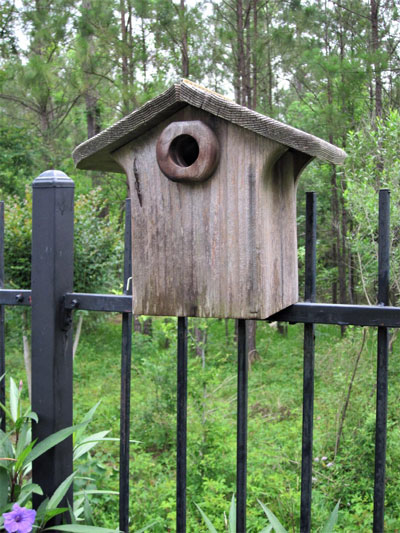
Safety first. An entrance hole guard is a safety feature for birds nesting in this well-designed birdhouse.
Nest boxes with slightly sloping roofs that overhang the sides and entrance hole, floors with drainage holes, and ventilation slots beneath the rooflines optimize ventilation and drainage. A hinged side or top simplifies cleaning and inspection.
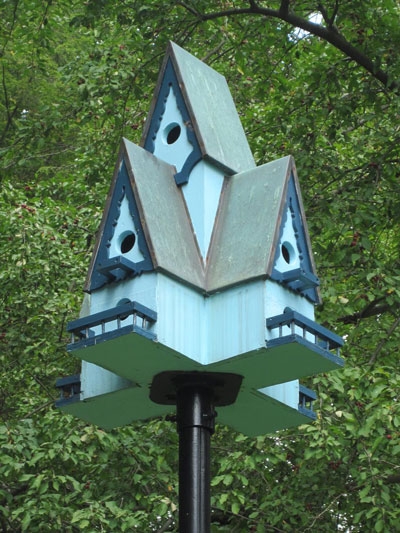
Sky high. Purple martins number among the bird species that nest in colonies. Mount their multi-unit birdhouses10-17 feet above ground.
Contrary to what some bird-lovers believe, cavity-nesting birds do not require a perch to enter a birdhouse. However, wire mesh or a series of shallow, horizontal grooves situated below the entrance hole on the inside of the box helps fledglings leave the nest.

Blue becomes you. As spring arrives, a bluebird might have to compete with a chickadee to claim this nest box.
And, remember, it’s never too early to install a birdhouse. Bluebirds and chickadees begin house hunting in early spring. Often, by mid-March or April garden birds are sitting on their first clutch of eggs. Some birds continue nesting through June, raising a second or even third brood.
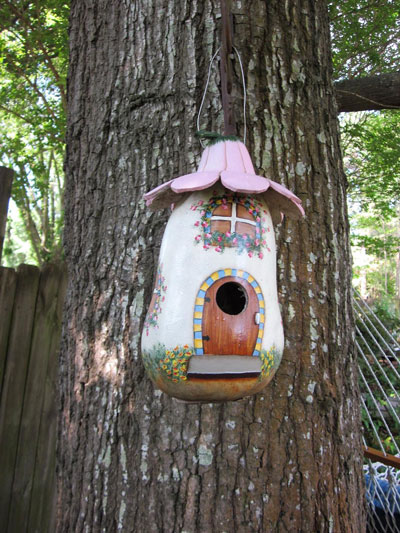
One-of-a-kind. This handcrafted gourd makes a cozy birdhouse.
Many bird species, including bluebirds, appreciate nest boxes that are securely mounted on sturdy fence posts or poles. Install a predator guard (metal or plastic cone-shaped collar) over the pole below the birdhouse. Deter additional predator attacks by adding an entrance hole extender.
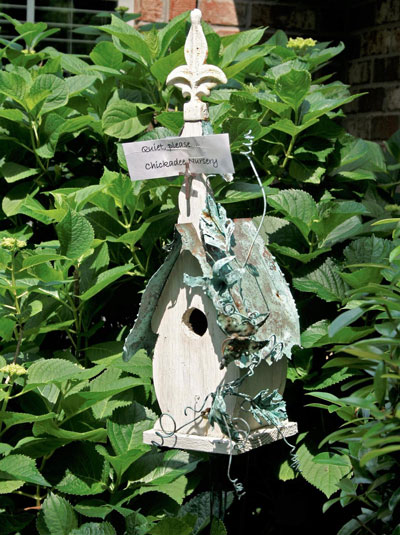
Do not disturb. A sign posted by a bird-lover reads, “Quiet, please…chickadee nursery.”
Once your birdhouse is in place, there are many things to tweet about. First, parent birds gather nest materials. Next, mother birds lay eggs and hatch nestlings. Then comes the flurry of feeding the young. Finally, one by one, the fledglings take flight.
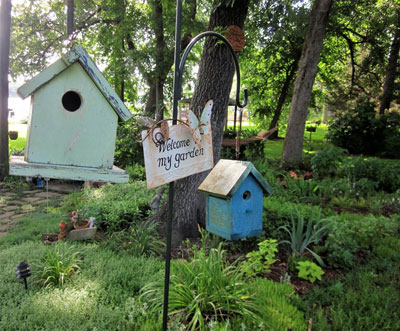
Home tweet home. Birdhouses and a garden sign invite garden visitors.
Not surprisingly, as the miracle of nature unfolds, many folks discover that the most endearing, engaging, and memorable tweets come from the birds themselves.
